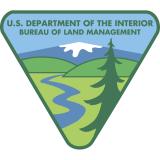California-Nevada Drought & Climate Outlook Webinar: March 27, 2023
According to the March 28 U.S. Drought Monitor, 36.7% of California-Nevada is in drought, with no Extreme (D3) or Exceptional (D4) Drought left in the region. Another series of Atmospheric Rivers are drenching the region, bringing a new round of flooding concerns. Does this mean the drought is over? This webinar provided an overview of current conditions and outlooks, as well as California and Nevada rangeland updates.
The California-Nevada Drought Early Warning System March 2023 Drought & Climate Outlook Webinar is part of a series of regular drought and climate outlook webinars designed to provide stakeholders and other interested parties in the region with timely information on current drought status and impacts, as well as a preview of current and developing climatic events (i.e., El Niño and La Niña).








